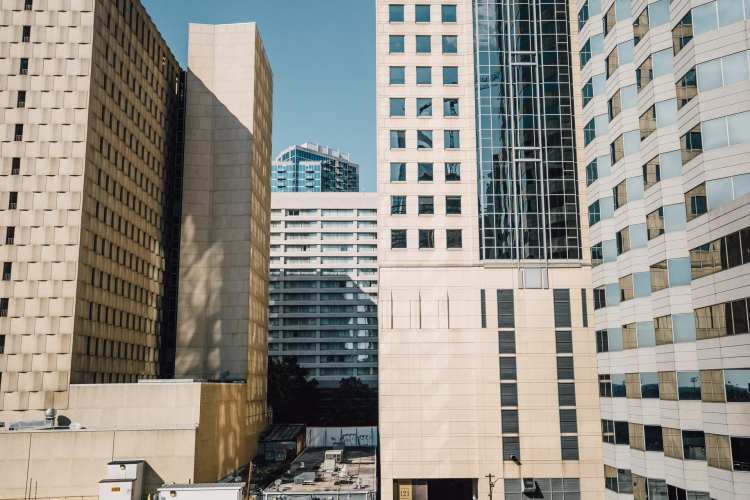Remember when political parties were condemned for being “poll-driven”. If only they were poll-driven (rather than donor-driven) now. We would have good population, climate, energy, tax and defence policies, as various publications in the past week or so reveal.
Let’s take them one by one.
Population.
This week the federal government’s National Housing Finance and Investment Corporation forecast that demand for housing could fall by between 129,000 and 232,000 dwellings over the next three years because the pandemic has stopped immigration.
Economists, media commentators and business groups went in to a frenzy of gloom.
They talked of a “worst-case scenario” of 214,000 fewer people in the country because of the pandemic.
But, surely, that should be a “best-case” scenario. After all, haven’t all these people been bemoaning lack of “affordable housing”; not enough housing construction and so on. What they really mean is they do not give a damn about people being decently housed. They only care about the profits from construction and having a pool of labour to keep wages low.
Comments on the media articles online from ordinary people attacked the idiotic assumption that lower or even zero population growth was a “bad thing” and something to be worried about. In fact, it is only a “good thing” for people who profit from it. For the rest, especially recent migrants, high population growth puts a damnable strain on their needs and basic wants: cheaper housing; less congestion; few people competing for schools and hospital places and so on.
There is an economic upside to the pandemic if it lowers Australia’s population growth or even reverses it. One of the best examples was the Black Death in England in the 14th century. Half the population died. The lords could not get enough labour. The serfs, hitherto tied to the lord’s land to work for next to nothing found they could move about a demand higher wages.
Laws passed requiring people to accept work for pre-plague wages were ignored. Fortunately, in Australia today we do not have to suffer vast numbers of deaths to achieve population reduction. We just have to reduce immigration and the birth rate, to improve the standard of living for the mass of people.
Yes, overall there will be a smaller economy, but average income per head will go up, even if the income for those at the top of the pile might go down.
Also this week, the Federal Government’s Centre for Population produced work by ANU academic Peter McDonald, saying the pandemic would cause a drop in fertility to 1.59 next year (a rate of 2.1 provides a stable population without immigration).

This, too, was greeted with shock and horror rather than a relief from all the strain that Australia’s rapid Third-World level of population growth has put on the good things of life, including the downward pressure on wages.
More Australians are getting this. High immigration and high population growth only improve the living standards for those at the top of the pecking order (the equivalent of the lords of the 14 th century) while making things worse for everyone else.
Do not listen to the distracting rubbish about the ageing population and the dependency ratio (the number of people under 15 or over 65 compared to the number of people of “working age”). Australia now has a dependency ratio of 54, that is 54 people aged under 15 or over 65 per 100 people of working age.
People worry that the ratio will go higher as the population ages. It will. But it has been higher before. It was 60 in 1969. Also, it is measured purely on age and does not account for the fact that a much higher portion of people over 65 are working these days.
On other policies, an Essential Poll this week found that two-thirds of people would prefer the government to support renewables rather than gas and only 20% support the Government’s proposed tax cuts for the rich. 80% think they would do little or nothing to help economic recovery.
The government has done worse than nothing on climate change by diverting public money from renewables to gas. In doing so, it has no only defied the public’s opinion about the environment but also about its opinion on security.
The most recent Lowy poll shows that Australians put climate change at the top of their national-security concerns followed by cyber security. The public sees little threat in the things that the Government has geared its massively expensive ships, aircraft and weapons programs towards: physical invasion by another nation. Apparently, the public rightly thinks that we are more likely to be invaded by rising sea levels.
In all, the Coalition Government has been listening to mates and donors rather than the people. Oh, for a return to poll-driven politics.
Speaking of defence and expensive weapons, this week, a development in the US, minimally reported in Australia, throws into question the value and reliability of our closest defence ally.
Defense News online reported that the US had designed, built and flown a prototype of its latest (sixth generation) jet fighter in just a year using advanced manufacturing techniques.
But poor ally Australia is left with a multi-billion-dollar contract to take more than 70 fifth-generation F35 fighters, the first of which is expected to go into service next year – already obsolete. Has Australia been conned? Or are our defence chiefs a little too eager to take whatever the US dishes up?
And really, we already have 24 F18 fighters that go 2000km/h which might be fun to fly but will do nothing to defend us against the real threats: global heating; cyber attacks and climate refugees.
This article was first published in Australian media on 26 September 2020.





